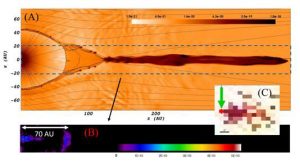High-power lasers, with the addition of high-strength B-fields, can help gaining unique insight and understanding of a variety of phenomena of crucial importance for astrophysics. We have shown that such platform could be used to study many astrophysical configuration, e.g. (i) the expansion of a young star isotropic disk wind threaded by a co-axial poloidal magnetic field [1,2], (ii) the issue of accretion dynamics in young star, in particular to shed light on the deficiency of x-ray emissivity in these systems [3], or (iii) the issue particle energization in astrophysical plasmas [4]. These examples will be reviewed and discussed. We will also discuss perspectives offered by the upcoming new generation of lasers, like the new APOLLON facility at Saclay, that will offer unprecedented levels of power (up to 10 PW), which will allow to generate very dense bunches of particles at high energy [5]. This could also have a positive impact on laboratory astrophysical studies, e.g. in the field of nucleosynthesis studies where extreme fluxes of neutrons are required in order to investigate double neutron capture, which is out of reach of existing, accelerator-based facilities, but which lasers might allow to tackle [6].

1. B. Albertazzi et al., Science (2014); http://www.sciencemag.org/lookup/doi/10.1126/science.1259694
2. G. Revet et al., Nat. Comm. (2021); https://rdcu.be/ceG0g
3. G. Revet et al., Science Advances (2017); https://arxiv.org/abs/1708.02528
4. W. Yao et al., Nat. Phys. (2021); http://arxiv.org/abs/2011.00135
5. K. Burdonov et al., http://arxiv.org/abs/2108.01336
6. S.N. Chen et al., Matt. Rad. Extremes (2019); https://doi.org/10.1063/1.5081666
LULI, Ecole Polytechnique, FR




